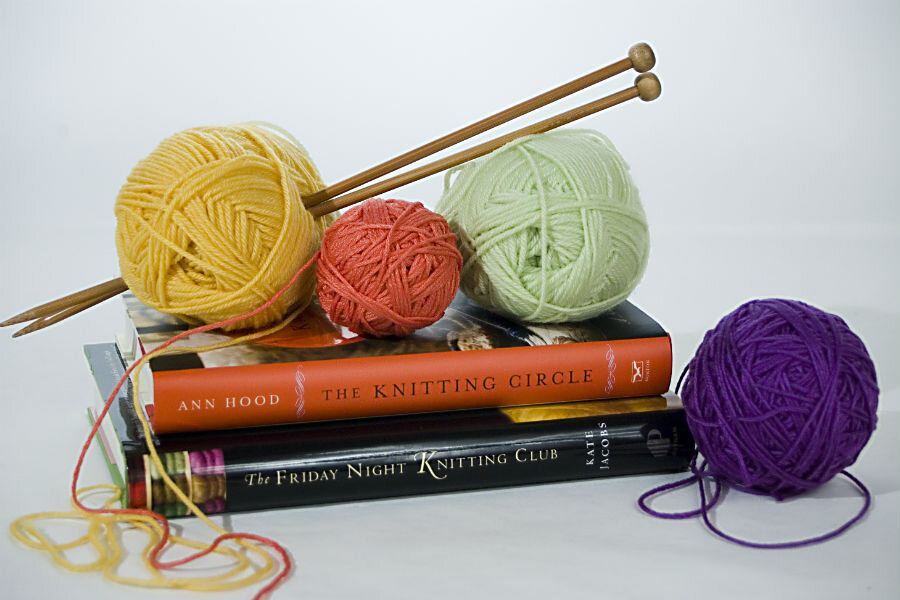Windy Knitty: Chicago knitting club became a haven for teens
Loading...
Students are getting knitty in a gritty urban neighborhood on Chicago's west side, as they are learning to craft skeins of yarn into a blanket of calm that is making them more social – and fiscally sound.
“Three years ago, I started teaching kids here to knit and then I thought, ‘Let’s see if we could sell what they make at my church and give the kids some pocket money in the process,” says Dorothea Tobin, a teacher at North Lawndale College Prep, in a phone interview from her classroom where she is surrounded by clicking needles and chatting teens.
In the "BT Lives in the Stitch" club, according to Ms. Tobin, students price their wares between $10 and $30 per item and reap the rewards of being able to socialize while earning enough profit to pay for prom tickets or sundries they might not otherwise be able to afford.
In North Lawndale, nearly 40 percent of the residents live under the poverty line, and 30 percent do not graduate high school, according to the neighborhood demographics section of a 2010 Chicago census.
Tobin says there is another, similar program run in the area at other schools by the Better Boys Foundation, called the KnitLAB, a fiber arts workshop. Calls to the foundation were not immediately returned.
Of the 40 students in Tobin’s club a handful are boys.
Asked if there was a difference between what boys and girls prefer to knit she says, “Boys prefer to knit scarves because those are good sellers. Girls tend more towards baby hats.”
“My next goal is to get them to knit for themselves and their friends and wear what they make,” says Tobin. “I want it to be more about something cultural than just profit, but in this area that’s a very big motivator.”
The yarn used comes through donations and the teacher buying some high end yarn to boost the value of the products. Tobin explains that “really good yarn is expensive for students here.” She accepts donations of used knitting needles (preferably #35 needles and #13 and #16 hat needles) and yarn.
“I just can’t tell you how many #35 needles I’ve given away!” she says. “But you know, we’ll take anything and find something to make with it.”
She has observed that the simple act of mastering a traditional skill and producing something has a profound effect on her students.
“It like when my husband once complained to his mother that he didn’t know how to do anything at all and she taught him how to bake a cherry pie,” she says. “He mastered it and he felt the confidence that comes with that accomplishment of being able to say, ‘I know how to do that.’”
Tobin adds that what she likes best about the club is that it’s a social skill-building exercise as well as a crafting session.
“They’re [students are] always making fun of my rules, but I have club rules for a reason,” she says. “I don’t want them to isolate themselves in the process.”
The first rule of Knitting Club, Tobin says, is no headphones “That’s because knitting is a social activity. We listen to music but we listen together and we talk.”
The second rule is to dance with her on Fridays.
The third rule, she says is “Greet each other when new members come to join us in a session.”
“I think what she’s doing with these kids is fantastic,” says Lucy Sinklet, owner of the “Close Knit” yarn shop in Evanston, Ill., a shop where Tobin buys her up-scale yarns. “It’s wonderful to see kids making something with their own hands and feeling that accomplishment.”
Tobin also frequents her local Michaels craft store where she gets a teacher discount and a shop called Windy Knitty.
“That’s a tough neighborhood where her school is located,” Ms. Sinklet adds, “She does this out-of-pocket so we try and help where we can. We often have people who have needles they don’t need any more or leftover yarn. I collect it up and give it to her the next time she comes in.”






